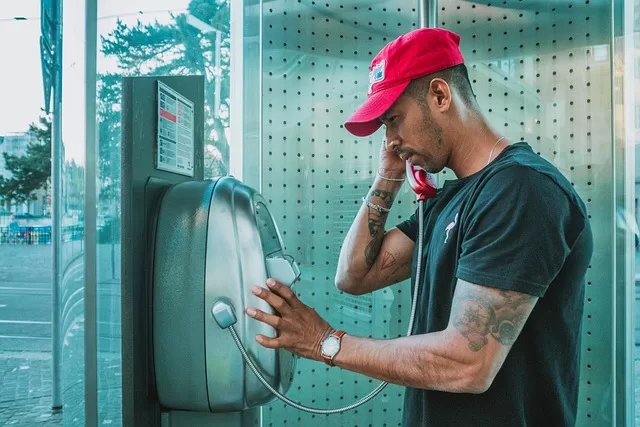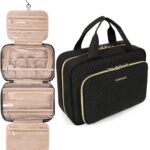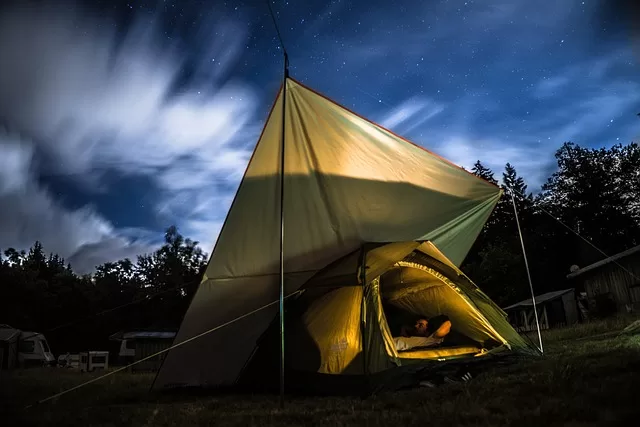If you have ever been on a road trip and witnessed an accident you will know how frightening and sobering the experience can be. Road trips can be exciting, but they also come with inherent risks, particularly if you are driving on unfamiliar roads and don’t take precautionary measures. On that note, when going on a long ride, it is always a good idea to figure out how to stay safe and avoid accidents during road trips. This includes taking precautions and protecting not just yourself but the next person out there on the road.
I have provided drivers, cyclists, and pedestrians alike helpful tips to stay safe and avoid accidents during road trips. nobody plans for an accident when planning road trip itineraries and routes but it is best to always be armed, in order to enjoy all the fun things to do on a trip and even more.
This guide covers important safety measures such as planning your route, staying alert, and tips for being prepared and handling emergencies. Additionally, some of the leading causes of road accidents have been outlined here, how to avoid them and stay safe. It doesn’t matter whether you are a novice or a seasoned road tripper, it is always important to prioritize safety when on the road and these tips can help make your road trip safer and more enjoyable for everyone involved.
Causes of Road Accidents During Road Trips
There are several causes of road accidents during road trips, and it is crucial for drivers to be aware of them to take necessary precautions. While some accidents may not be your fault as a driver or road user, there are some things to take into consideration and look out for to stay even on the safer side.
Reckless Driving
Reckless driving, which includes speeding, tailgating, and making sudden lane changes, can put not only the reckless driver but also other drivers, cyclists, and pedestrians in danger. Distracted driving, such as texting, eating, and using GPS, is also a leading cause of road accidents and can have severe consequences.
Driving While Drowsy
Driving while drowsy is another risk factor that can impair a driver’s reaction time, judgment, and decision-making ability. It can also increase the risk of falling asleep behind the wheel, leading to catastrophic accidents. Impaired driving, which refers to driving under the influence of drugs or alcohol, is illegal and a significant contributor to road accidents.
Adverse Weather Conditions
Adverse weather conditions, such as heavy rain, snow, and fog, can also make driving conditions dangerous. To know how to stay safe and avoid accidents during road trips, drivers should be aware of the weather forecast before starting a road trip and take appropriate precautions, such as reducing speed, increasing the following distance, and using appropriate tires. Poor road conditions, including potholes, loose gravel, and slippery surfaces, can also pose a significant threat to drivers.
Overloading Vehicles
Finally, overloading vehicles can cause stability problems and increase the risk of accidents. Drivers should ensure that their vehicles are loaded safely and within weight restrictions to avoid overloading. By being aware of these causes of road accidents and taking necessary precautions, drivers can make their road trips safer and more enjoyable for everyone.
Essential Safety Tips for Drivers
For drivers, to know how to stay safe and avoid accidents during road trips, here are some of the tips you should always have up your sleeves.
Follow the Vehicle in Front of You at a Safe Distance
Keep a safe following distance from the vehicle in front of you to allow for sudden changes in speed or direction. The distance should be increased during adverse weather conditions.
Avoid Any Form of Distraction
Avoid distractions while driving such as using your phone, eating, drinking, or engaging in any activity that takes your attention away from the road. Concentrate on the road and minimize the number of passengers in the vehicle.
Always Wear Your Seatbelt
Wear a seatbelt at all times, even on short trips, and ensure that it is properly fastened to reduce the risk of serious injury or death in the event of an accident.
Obey Traffic Laws and Signals
Obey traffic laws and signals to reduce the risk of accidents and ensure the safety of yourself and other road users.
Stay Alert and Avoid Drowsiness
Stay alert and avoid driving while feeling drowsy as it impairs your reaction time, judgment, and decision-making ability. Take breaks, drink water, and get plenty of rest before setting off on a road trip. If feeling drowsy, pull over to a safe place and take a nap.
Impaired Driving Should Be Avoided
Avoid impaired driving such as drinking and driving or driving under the influence of drugs, by arranging alternative transportation. If you figure out that you are too unstable to drive, please by all means consider alternative transportation. There are several road trip apps and tools as well as road trip gadgets and tech to make driving safe and easy which you could also use to signal for help.
Run Routine Safety and Maintenance Checks on Your Vehicle
Maintain your vehicle regularly with routine checks on brakes, lights, signals, tires, and other parts to reduce the risk of breakdowns and accidents.
Consider and Adjust Accordingly to Weather Conditions
One of the most helpful tips to stay safe and avoid accidents during road trips is to adjust your driving to the weather conditions by slowing down during inclement weather and ensuring your tires are suitable. Use low beams and slow down during fog and take extra caution on slippery roads.
Essential Safety Tips for Cyclists and Pedestrians
There are essential tips to stay safe and avoid accidents during road trips for cyclists and pedestrians to ensure an enjoyable trip. Some of the best ways to stay safe and avoid accidents as a pedestrian or cyclist on a road trip are by wearing protective gear, being visible, following traffic laws, exercising caution at intersections, staying aware of your surroundings, and avoiding distractions.
Wear Your Protective Gear
Staying safe on the road is crucial for cyclists and pedestrians. Wearing appropriate protective gear is essential to avoid potential harm. Make sure to wear a helmet that fits correctly and meets safety standards. Wear reflective clothing and add lights to your bike or backpack to enhance visibility to other road users. Consider gloves, sunglasses, and proper footwear to protect your hands, eyes, and feet.
Be Visible
Being visible is critical when you are on the road. Cyclists and pedestrians are more vulnerable to accidents, and drivers need to spot them quickly. Wear bright and reflective clothing and use lights on your bike or backpack, especially during bad weather or at night. Make eye contact with drivers at intersections to ensure they see you.
Obey Traffic Laws
Pedestrians and cyclists must abide by traffic laws, similar to drivers. Stop at stop signs and traffic lights, use the proper hand signals when turning, and walk or cycle on the right side of the road. Following traffic laws enhances your safety and maintains order on the road, reducing the likelihood of accidents.
Exercise Caution at Intersections
Intersections can be particularly dangerous for pedestrians and cyclists. Drivers may not always see them or be aware of their presence. Exercise caution when crossing intersections and always look both ways before proceeding. If possible, use paths or sidewalks to avoid crossing busy intersections.
Be Aware of Your Surroundings
Staying aware of your surroundings is vital when you’re on the road. Pay attention to the vehicles around you and be prepared to react if a driver suddenly turns or stops. Look out for road hazards like potholes, debris, and slippery surfaces.
Don’t be Distracted
Distractions can be deadly on the road, especially for cyclists and pedestrians. Avoid texting, using your phone, listening to music, or talking on the phone. Keeping your focus on the road helps you react quickly to any potential dangers and reduces the likelihood of accidents.
How to React in an Emergency or Accident during a Road Trip

Even the most well-planned road trip can take a turn for the worse in an instant. From minor accidents to more serious incidents, being prepared to react in an emergency can mean the difference between life and death. It is always advised to go with some road trip essentials like car accessories for any road trip and a first aid and emergency kit. Don’t fail to be armed with enough safety tips and skills for a time like that. Here are some tips for both the rivers and passengers on road trips to help everyone stay calm, collected, and in control in any emergency situation.
Call for Help
In case of a road trip accident, it’s crucial to know how to call for help. If you have a phone, dial emergency services to get immediate assistance. If you don’t have a phone, try to find someone who does and ask them to make a call for you. Make sure to provide your location and describe the emergency.
Stay Calm
Remaining calm is vital in an emergency situation. Panicking can lead to poor decision-making and further harm to yourself or others. Take deep breaths and evaluate the situation. If injured, try to stay still and avoid unnecessary movements. If possible, assist others who may be injured.
Ensure Safety
Ensuring your safety and the safety of others should be your top priority. Move your vehicle to the side of the road, turn on your hazard lights, and set up road flares if possible. If you are on foot, move to a safe location, like the sidewalk or a nearby business.
Provide First Aid
If someone is injured, provide first aid if you are able. Stop any bleeding by applying pressure to the wound and elevate the affected limb if possible. If the person is unconscious or not breathing, perform CPR if trained to do so. Do not move an injured person unless necessary to prevent further harm.
Report the Accident
Report the accident to the authorities as soon as possible. Give them your contact information and details of the accident, including location, time, and any injuries or property damage. Contact your insurance company if you have insurance.
Conclusion
To stay safe during road trips, it is important for all road users, including drivers, cyclists, and pedestrians, to take responsibility for their actions. Practicing good habits and being mindful at all times can help prevent accidents. Some important tips on how to stay safe and avoid accidents during road trips are wearing protective gear, following traffic laws, being cautious at intersections, being aware of surroundings, and avoiding distractions.
In the event of an emergency road trip accident, it’s crucial to call for help, stay calm, keep oneself and others safe, provide first aid if necessary, and report the accident to authorities. Road safety should always be a top priority, particularly when you explore some road trip itineraries in unfamiliar territory where accidents can have devastating consequences. By following these tips, we can ensure everyone has a safe and enjoyable experience. It’s never too late to start practicing safe habits on the road and making an effort to put safety first. Let’s work together to make our roads safer for everyone by being mindful of our actions and following the rules of the road.



























